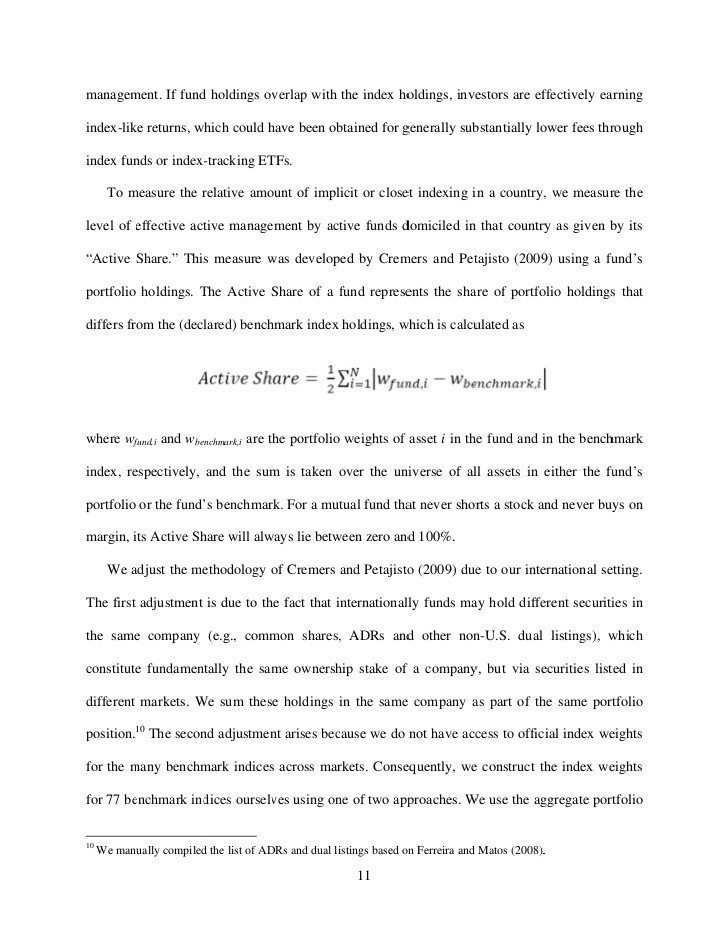Persistence’ angle adds to activepassive fund debate
Post on: 20 Июнь, 2015 No Comment

WilliamDroms
William’s Latest Posts
In their Retirementors contributions this month, Ron Isbitts and George Sisti provide two different perspectives on the active-passive debate. Both approach the issue through analysis of the performance of active funds compared with passive index funds.
In a March 14 article, “Active or passive investing? Try both,” I argued the case for a mix of both passive and active funds, sometimes referred to as a core/noncore approach. In this article, I take a look at the active-passive debate from a different angle, exploring the issue of mutual fund performance persistence.
Performance persistence is an important issue for investors because investors and advisers who lean toward active management typically spend a significant amount time studying the past performance of active funds in which they plan to invest. Evidence of performance persistence would indicate that superior active funds can persist in superior performance and thus support the hypothesis that persistent performance is the result of skill and not luck. The performance persistence question simply asks: If mutual fund performance does not persist, can there be any possible justification for including past performance as a key criterion of selecting mutual funds?
I published a paper a few years back in the Journal of Financial Planning (May 2006) entitled Hot Hands, Cold Hand, Does Past Performance Predict Future Returns? Essentially what I did for this article was to review the major research articles on performance persistence that had been published in peer-reviewed academic finance journals over the previous 15 years to see if any common themes emerged.
Academic research into performance persistence generally follows two protocols. The earliest tests generally were tests of the persistence of risk-adjusted performance, or tests of portfolio alpha. Alpha for a mutual fund is a measure of the return on a fund compared with the return predicted by capital asset pricing theory as a function of the systematic risk (beta) of the fund and the return on the market. For the vast majority of equity mutual funds, alpha isn’t statistically different from zero. Funds with positive alphas are judged to be outperforming the market on a risk-adjusted basis. Tests for persistence of alpha are designed to test whether or not risk-adjusted performance persists from one period to another.
Persistence tests published within the last 10 years also commonly employ the successive winner-winner, loser-loser methodology which may be more intuitively appealing to individual investors. This methodology ranks funds by one-year total returns, with the 50% of funds with the highest returns labeled winners and the 50% of funds with the lowest returns labeled losers. Winners and losers are then sorted into winners, losers, or gone in following years. Statistical tests are used to test whether the number of funds with persistent performance (that is, the number of winner-winner and loser-loser pairs) is significantly greater than what would be predicted by chance.
In evaluating all of the persistence studies, five inferences generally supported by the research can be drawn:
1. Past performance counts. The studies generally demonstrate that past performance persists in the short run but there is very little evidence of persistence in the long run. The studies find with remarkable consistency that superior performance in one year is associated with superior performance in the following year, but superior performance generally does not persist to the second and subsequent years. This finding is consistent with the stock momentum effect that has received increasing acceptance in the past few years. In short, hot hands persist, albeit for short time periods.
2. Cold hands persistence is much stronger than hot hands persistence: Poor past performance is a strong predictor of future poor performance. The contrarian strategy of investing in last year’s poorly performing funds is shown to be a poor strategy.
3. Within-category performance is more persistent than performance relative to the overall market: This is an observation that my old calculus professor liked to call intuitively obvious to a casual observer, but wasn’t obvious until this observation emerged from the data. Performance persistence is best evaluated relative to a style-based benchmark rather than the market in aggregate.
4. Short-term persistence is much stronger than long-term persistence: Although the various studies differ on whether performance persists in the long run, the balance of the evidence leans in the direction of much weaker or no persistence over periods longer periods.
5. International equity fund persistence is stronger than U.S. fund persistence. The one study specifically testing persistence of international equity funds found highly significant persistence for one-year holding periods, but no evidence of persistence for two-, three- or four-year periods.
The most important implication from performance persistence studies is that the historical performance of mutual funds contains useful information about future performance, at least for one-year holding periods. This does not imply that historical performance should be the sole or even most important criterion for selecting mutual funds, but it does recognize that past performance contains significant information about likely future performance, especially for poorly performing funds.
Performance persistence also provides some information about the value of active management since if superior performance was simply a matter of luck rather than fund management skill, performance wouldn’t persist.














